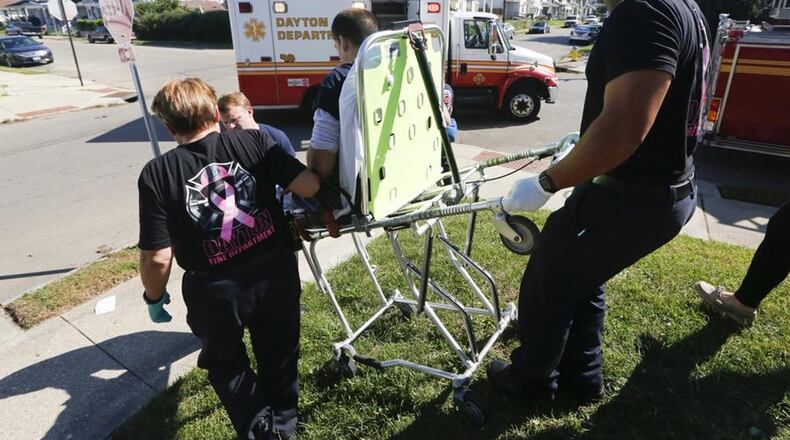There are similarities between the two moments, decades apart. States in both cases are seeking to hold industry players financially accountable for massive and costly public health crises.
Settlements can only be negotiated once, however. And with the settlement terms with Big Tobacco, money was eventually diverted to fill budget gaps and fund other non-tobacco prevention projects, said Ken Slenkovich, former program director for Ohio’s Tobacco Use Prevention and Control Foundation, which was the state agency administering the tobacco settlement funds.
“When we look at the data, it shows that the money that was invested by the states made an impact. Smoking rates went down, youth smoking rates went down,” Slenkovich said. “Unfortunately it wasn’t something that could be sustained, because states diverted those dollars to other purposes.”
The terms of the opioid settlements will determine for better or worse how the money is spent this time around.
The OneOhio settlement plan is with the three largest distributors of opioids, Cardinal Health, McKesson and AmerisourceBergen.
Under the OneOhio plan, 85% of the settlement will be spent at the local level. The total settlement breakdown is:
- 55% going to a foundation created to disburse the money and fund programs that benefit Ohioans affected by opioids and/or prevent addiction;
- 30% earmarked for community recovery programs at the local level;
- and 15% going to the state of Ohio.
Lucas Sullivan, spokesman with the Ohio Attorney General’s Office, said the foundation was created in partnership with the local governments to ensure the same thing doesn’t happen when the tobacco money was distributed.
“But Ohio is so diverse that the opioid crisis might have impacted southeast Ohio differently than northwest Ohio. That is why the money will go regionally and it is then for the regions to determine how best to abate the issue in their community,” Sullivan said in a statement.
Ohio’s tobacco settlement
The tobacco money traces to 1998, when Ohio and 46 other states settled lawsuits against the tobacco industry.
The money that went to the states came with discretion on how it could be spent. By 2008, the Great Recession hit and by 2009 unemployment was over 10%. Gov. Ted Strickland and the Ohio General Assembly, wrestling to balance the state budget, began using the tobacco money for other programs.
Ohio’s tobacco funds were were shifted to a job-creation fund and the state dissolved the foundation when it tried to stop the diversion, according to Slenkovich. The money was moved to the state’s general revenue fund and later the state sold the rights to future payments from the settlement agreement in exchange for a lump sum.
As Ohio works on a final settlement, Slenkovich said there are several lessons to be learned from the tobacco settlement. Slenkovich is not the only expert to share concern about the possible diversion of the opioid money.
For years, as lawsuits made their way through the courts, articles have published in medical journals and as editorials in Health Affairs, Journal of the American Medical Association and more echoing similar concerns.
Now, with a major settlement in reach and with details for public review, Slenkovich said there’s strengths to the OneOhio plan. Compared to the tobacco settlement, he said the OneOhio language would make it much harder to divert opioid settlement money to unrelated causes.
“That provides some assurances that the funds will not be diverted,” he said.
Also, when looking at how state leaders redirected the tobacco money in a financial crisis, Slenkovich said it’s good that Ohio is creating a separate private foundation to manage the money.
Slenkovich also praised that the plan calls for an expert panel to advise how to best use the cash and some experts from the panel could also be part of the foundation’s governing board.
But he said when setting up the foundation to manage future opioid settlement money, there’s opportunities to protect the investment.
Rules could be created that would prevent the money from going to unrelated causes if the board ever dissolves the foundation.
He said he’d like to see over half of the board members not be elected officials and some of the board members be required to come from the expert panel.
“It would help to ensure that the funds will be used appropriately and without undue political influence,” Slenkovich said.
Montgomery County accidental overdoses, largely fueled by opioids.
2021: 219 as of Aug. 15
2020: 323
2019: 288
2017: 566 (largest amount recorded)
How to get help
To find local service providers for addiction, rehab, mental health and more in Montgomery County, download the GetHelpNow interactive directory to find a facility near you. You can find it in the app store on your phone or go to gethelpnowmc.com to click “access for free.”
Anyone in Ohio can reach the Crisis Text Line by texting the keyword “4hope” to 741 741 to be connected to a trained crisis counselor within 5 minutes. Treatment options can also be found 24/7 by calling 1-800-662-HELP (4357) or at samhsa.gov/find-treatment.
About the Author

